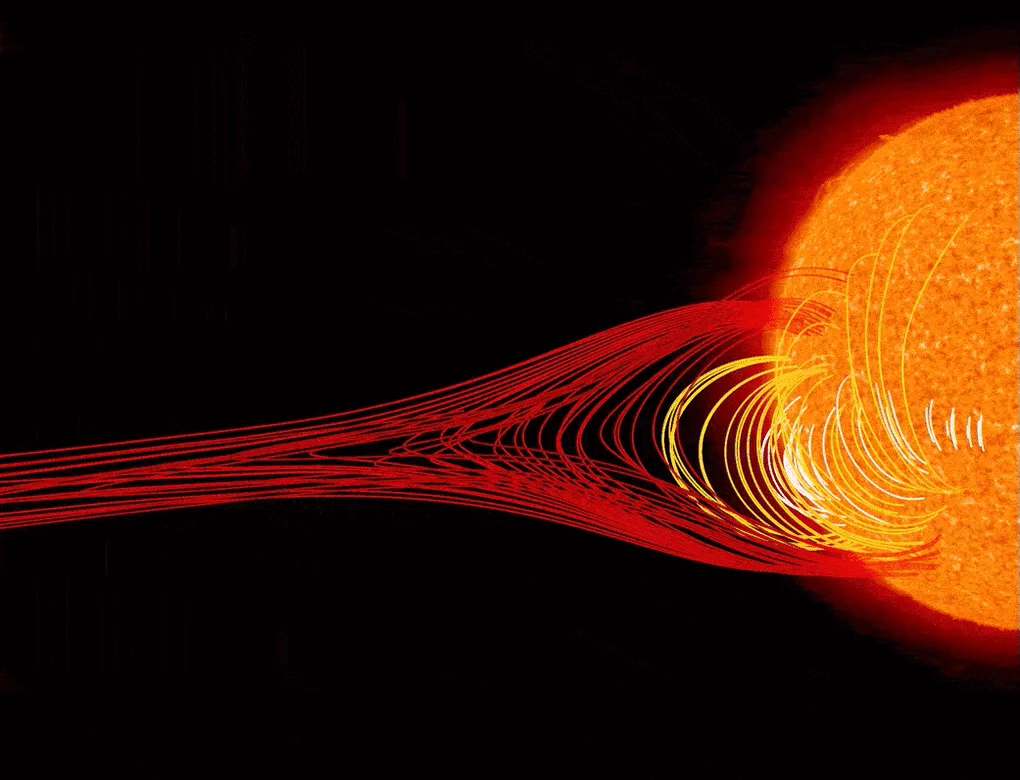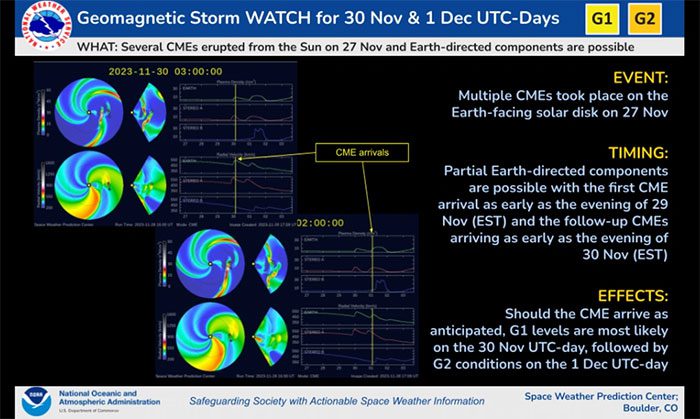Solar storms at their peak can disrupt Earth’s power grid and affect the operation of satellites in the sky.
According to the Space Weather Prediction Center of the National Oceanic and Atmospheric Administration (NOAA), a high-intensity solar storm will strike Earth on November 30 and December 1.

Simulation of radiation flows from a solar storm. (Image: NASA).
The cause of this phenomenon is a plasma eruption, known as a coronal mass ejection, which occurred on the Sun on November 27. NOAA has classified this eruption at M9.8 level, just a few percentage points away from being classified as X – the highest level.
A solar storm, or coronal mass ejection (CME), is a disturbance of Earth’s magnetic field caused by streams of charged particles emitted from solar eruptions. Similar phenomena can also be observed on other planets in the solar system, especially those with magnetic fields, including Saturn, Mercury, Neptune, Jupiter, and Uranus.
Typically, solar energy streams either veer away from Earth or are too weak to penetrate Earth’s magnetic field, causing minimal damage. However, from time to time, the Sun generates a storm strong enough to breach this “shield” of magnetic protection.
When a solar storm makes landfall, it can cause chaos in information technology systems, “crippling economies and endangering the safety and livelihoods of people around the world,” according to NASA.

Solar storm warning for November 30 and December 1. (Image: NOAA).
Fortunately, such high-intensity energy storms are rare. According to NOAA, this solar storm may lead to increased auroral activity around the poles and minor fluctuations in power grid systems in some areas on November 30.
However, it is noteworthy that this solar storm could resonate with at least two previous storms to create more significant effects on December 1.
Daniel Verscharen, an Associate Professor of Space Physics and Climate at the University of London, noted that peak geomagnetic storms can disrupt Earth’s power grid and impact satellite operations.
The Carrington Event of 1859 is considered the strongest solar storm ever recorded. At that time, telegraph operators were jolted by their own equipment, and fires broke out at telegraph stations as the current generated by the storm flowed through the wires.
Solar storms also give rise to a fascinating natural phenomenon known as the aurora. This phenomenon is created by particles from solar storms as they accelerate along Earth’s magnetic field to higher latitudes and descend into the upper atmosphere.
There, the particles from the solar storm interact with atmospheric matter, creating shimmering light curtains in the sky that can be seen with the naked eye.


















































